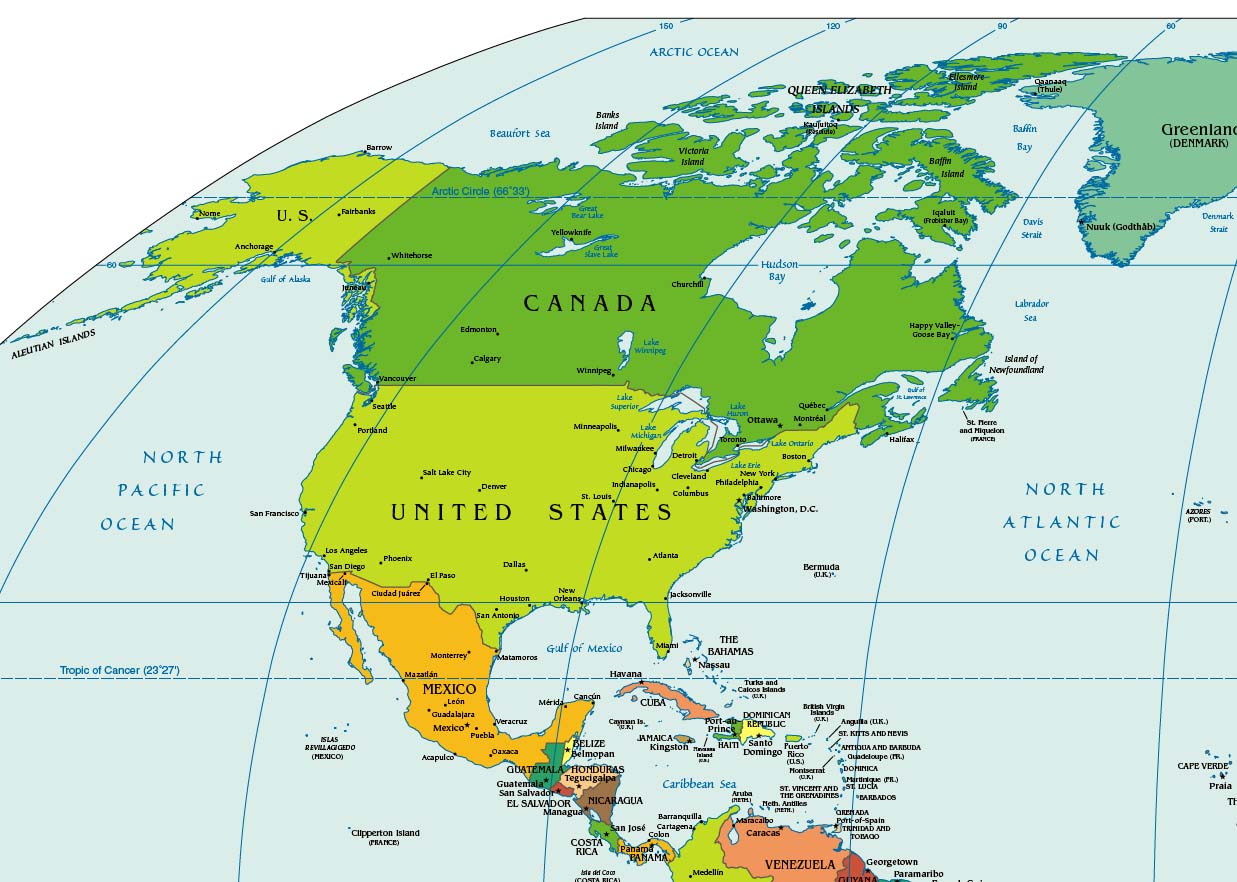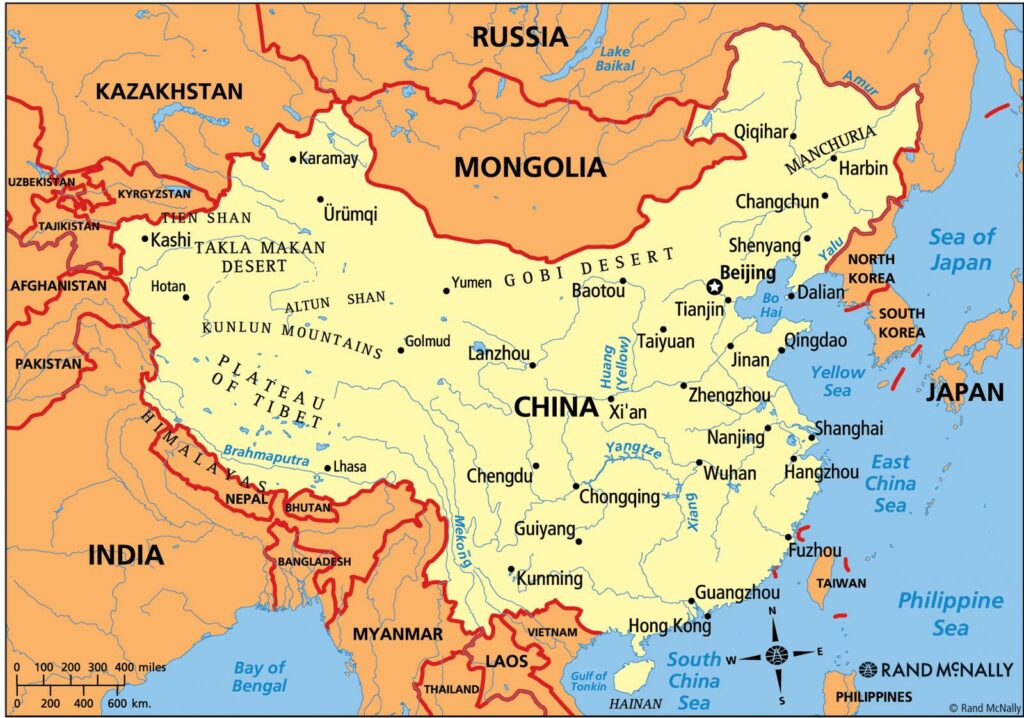Introduction
North America, a vast and diverse continent, is home to a rich tapestry of cultures, landscapes, and histories. From the Arctic tundra in the north to the tropical rainforests in the south, North America boasts a wide range of geographical features and a fascinating history shaped by indigenous civilizations, European colonization, and the struggles for independence. In this comprehensive guide, we will delve into the North America map, explore its geographical features, uncover key historical events, and highlight interesting facts that make this continent truly unique.
Geography of North America
Physical Features
Mountain Ranges
North America is home to several significant mountain ranges. The Rocky Mountains, stretching from Canada to the United States, dominate the western part of the continent. The Appalachian Mountains, running along the eastern United States, provide a stark contrast in landscape.
Great Plains
The vast Great Plains, situated between the Rocky Mountains and the Mississippi River, form an expansive, flat region that is crucial for agriculture.
Coastal Features
The continent boasts diverse coastlines, from the rugged cliffs of the Pacific Northwest to the sandy beaches of the Gulf of Mexico. The Atlantic and Pacific Oceans border North America on the east and west, respectively.
The Great Lakes
North America is home to the Great Lakes – Superior, Michigan, Huron, Erie, and Ontario – which are the largest group of freshwater lakes in the world.
Climate Zones
Arctic Tundra
The northernmost regions of North America experience an Arctic climate, characterized by extremely cold temperatures and frozen landscapes.
Temperate Zones
The majority of North America falls within temperate zones, with varied climates ranging from the humid subtropical climates of the southeastern U.S. to the arid climates of the southwestern states.
Tropical Regions
Southern parts of North America, particularly Mexico and parts of Central America, experience tropical climates with warm temperatures and distinct wet and dry seasons.
Map of North America
Political Map
Countries
North America is composed of 23 countries, with the three largest being Canada, the United States, and Mexico. Other nations, such as Guatemala, Honduras, and Costa Rica, contribute to the continent’s cultural and political diversity.
Capitals
Explore the capitals of North American countries, including Ottawa (Canada), Washington, D.C. (United States), and Mexico City (Mexico), each serving as a hub for political and cultural activities.
Physical Map
Topography
The physical map showcases the varied topography of North America, from the elevated plateaus in Mexico to the low-lying coastal plains along the Gulf of Mexico.
Major Rivers
Highlighting significant rivers such as the Mississippi, Missouri, and Rio Grande, the map illustrates the vital role these waterways play in shaping the continent’s landscapes and supporting ecosystems.
Mountain Ranges
Identify key mountain ranges, including the Rockies, the Sierra Nevada, and the Appalachian Mountains, and understand their impact on weather patterns and biodiversity.
Cultural Map
Indigenous Peoples
Recognize the diverse indigenous cultures that have inhabited North America for thousands of years. Learn about the traditions, languages, and histories of the Navajo, Inuit, Iroquois, and many other indigenous nations.
Migration Patterns
Explore historical and contemporary migration patterns, including the movement of European settlers, African slaves, and waves of immigration that have contributed to the continent’s cultural mosaic.
History of North America
Indigenous Civilizations
Pre-Columbian Cultures
Before the arrival of Europeans, North America was home to advanced civilizations, including the Aztecs, Maya, and Cahokia Mound Builders. Delve into their achievements in agriculture, architecture, and social organization.
Impact of European Contact
Examine the consequences of European contact on indigenous populations, from the exchange of goods and ideas to the devastating effects of diseases brought by European explorers.
European Colonization
Spanish Conquest
Discover the Spanish conquest of Mexico led by Hernán Cortés and its lasting impact on the region’s culture and society.
English Colonization
Explore the establishment of English colonies along the eastern seaboard, including Jamestown and Plymouth, and understand the motivations behind the settlers’ migration.
Independence and Expansion
American Revolution
Uncover the events leading to the American Revolution, the drafting of the Declaration of Independence, and the birth of the United States as a sovereign nation.
Westward Expansion
Trace the westward expansion of the United States, driven by the concept of Manifest Destiny, and its consequences for indigenous populations and the shaping of the American identity.
Civil Rights Movement
Abolition of Slavery
Examine the abolitionist movement and the Civil War, which ultimately led to the emancipation of slaves and the reconstruction of the United States.
Civil Rights Era
Explore the struggles for civil rights in the mid-20th century, including key figures like Martin Luther King Jr., and the ongoing efforts to achieve racial equality.
Contemporary North America
Economic Growth
Understand the economic development of North America, with a focus on industries such as technology, agriculture, and energy that contribute to the continent’s prosperity.
Environmental Challenges
Address contemporary environmental issues, including climate change, deforestation, and pollution, and the efforts to promote sustainability and conservation.
Conclusion
North America’s map, geography, and history tell a compelling story of a continent shaped by natural forces, human migrations, and cultural exchanges. From the early civilizations of indigenous peoples to the complex tapestry of nations that exist today, North America continues to evolve, offering a dynamic and diverse landscape for exploration and understanding. This comprehensive guide provides a starting point for anyone seeking to delve deeper into the complexities and richness of North America – a continent that remains both historically significant and geographically captivating.
- 10 Iconic Animals Of South Africa - September 30, 2024
- Santa Cruz, California - September 19, 2024
- Richmond, Virginia - September 18, 2024




